NZ-made: Long-reach mini excavator
Dan Pulman from Pulman Earthmoving designed and constructed a long-reach boom and dipper arm for his 1.8-tonne Hitachi mini excavator

When Dan Pulman, from Pulman Earthmoving Limited, landed a job to dredge a pond that required a machine with a six-metre reach, he knew right off the bat he’d either need to find a way of using his existing 1.8-tonne Zx17u Hitachi mini excavator on the job or buy a larger machine. In a true testament to Kiwi ingenuity, he chose to instead craft a long-reach boom and dipper arm.
Figuring that the option to buy a larger machine, aside from being somewhat drastic was also impractical from an access point of view, Dan set about designing a long-reach boom and dipper arm to fit on his trusty little excavator.
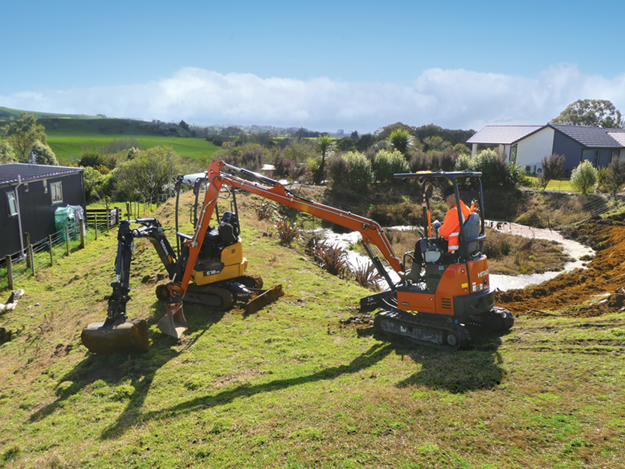
Being a bit of a MacGyver, Dan knew that with a little planning plus the purchase of some steel stock, he’d be able to put his thinking cap on and come up with a design that’d be just the ticket. Putting pen to paper, he came up with an initial design that looked like it might work.
A concept in the making
Once the concept drawings were completed, he saw that the first purchase he’d have to make would be four sheets of 5mm and half a sheet of 10mm mild steel plate.
The 5mm plate would be used to construct the boom and dipper arm, while the 10mm thickness product would be necessary for fitting the ram mounts and boom stick pivots.
Knowing that his decent-sized plasma cutter had enough grunt to cut through the thick plate, he figured that he’d be well on the way to forming the profiles required.
Dan modestly says that the planning part of the process did take "a bit of working out" and that "trial and error" was required to get the geometry right. Observing the finished product in action, the ‘trial and error’ Dan speaks of perhaps could be more accurately described as trial and ‘success’.
Original parts re-used
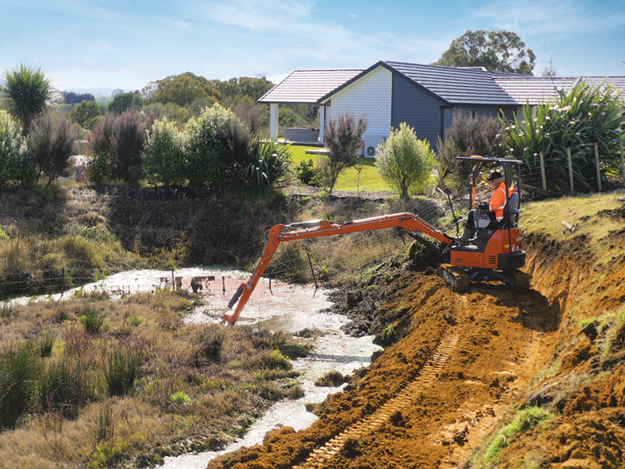 |
|
It’s all in the art of the set-up. While it’s not possible to see in a still shot, the digger is moving the entire mat of weeds here.
|
As daunting as the task of creating a completely new boom and dipper arm might at first sound, Dan told DOW that a lot of the componentry from the original set-up was able to be used in the new creation.
For instance, base components such as rams and bucket linkages were all reused, along with most of the hydraulic ram hoses plus auxiliary pipework and fittings.
Hydraulink in Hamilton fabricated the piping required for the extra length in the boom, while Dan had the extra bushes required manufactured by a local engineering firm. When asked how long it would take to refit the original set-up to the digger, Dan reckoned it should only take a morning’s work.
He added that a fair bit of planning went into making sure that when the time came to do a changeover of the boom, the operation would require as few hand tools as possible.
All that’s required he says is a few spanners, a hammer, a pin punch, and some grease.
A seemingly obvious question to ask of the designer was focused on the issue of counterbalance, given the fact that the bucket was now working at a greater distance from the base machine.
 |
|
There’d be at least 200kg of weight being carried at this extention
|
It was a question that Dan was happy to answer by pointing to an extra counterweight sitting on the workshop floor. Although Dan spent considerable time manufacturing the weight, it’s something he says he’s never bothered to fit into the little digger, saying that the little 1.8-tonne machine is well-balanced without the extra weight.
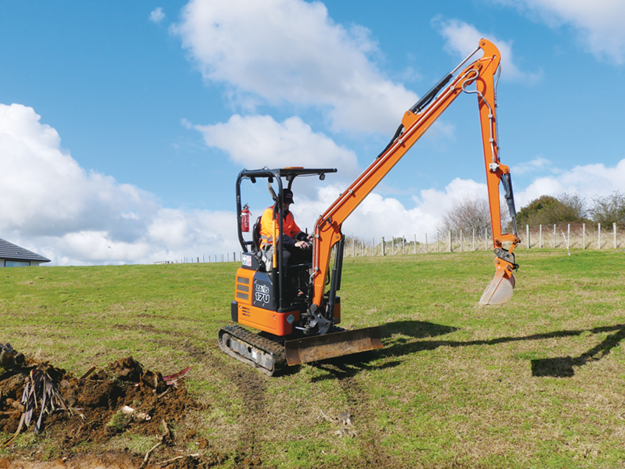 |
|
The digger effortlessly traversing a 15 plus degree slope
|
Anyone doubting the validity of that statement only needed to see the machine traversing a slope of 15-plus degrees, with a bucket at the end of the lengthened boom and raised about half a metre above the ground.
Only one compromise
 |
|
The machine has a reach of 6m
|
The only compromise Dan says he’s made to accommodate the longer reach was to fit a smaller capacity 600mm GP bucket as opposed to a standard 900mm bucket.
The narrower bucket is attached via a standard Wedgelock draw-pin hitch, making it easy to transfer to a wide bucket for close-up work when required. Auxiliary piping to the end of the stick to run any powered attachments is provided to accommodate specialist attachments.
Out in the field
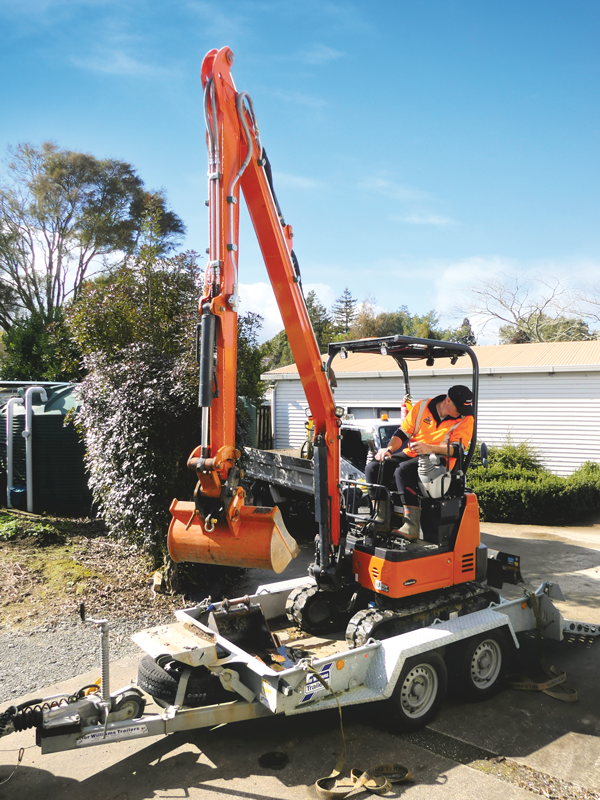 |
|
The long-reach mini excavator is easily transported on a two-axle trailer
|
DOW went along for a ride with Dan to one of his job sites where the mission was to dredge a 20x20 metre pond. Dan proved that transportation of the mini excavator, despite its extra-long protuberance, was, in fact, no different from transporting any digger with a standard-size boom attached.
It only took a few moments to load the machine onto one of his twin-axle trailers, which was towed behind the firm’s Colorado ute, and then it was off to the site a few kilometres away.
To gain closer access to the pond, Dan had benched a track earlier in the day using his
1.8-tonne John Deere digger to complete this part of the task. Seeing a mini digger with a long-reach boom walking along a narrow track alongside a pond didn’t require much imagining as to the possible consequences of even the slightest error of judgement.
The tension of the moment was only heightened as Dan slewed the machine to 90 degrees and extended the bucket to its maximum reach, grabbing a mouthful of sludge as he went.
A reasonable estimate of the weight carried in the narrow bucket at any given time of the day would be somewhere in the region of 350kg, yet the machine and its attachment handled the task with ease.
Clearly, this successful operation was the result of a combination of the stability of the base machine, the design and fabrication of its attachments, and the skill of the operator; nonetheless, it must be said that it all looked impressive.
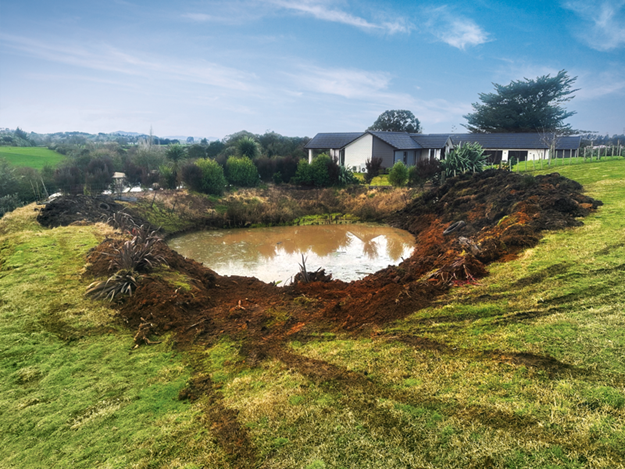 |
|
Finished product
|
While there was a definite hankering to stay on and watch the job through to completion, the story of the observations of the day still needed to be written up so it was left up to Dan to provide photos of the finished product.
The last word, however, should go to Dan, who says, "To my knowledge, this is the only mini-1.8-tonne long-reach digger in New Zealand (I could be wrong) but surely no one else would be crazy enough to think about building one, let alone building it."
For more information, contact Dan Pulman 020 4043 1802.
Find new and used heavy machinery for sale in NZ
Keep up to date in the industry by signing up to Deals on Wheels' free newsletter or liking us on Facebook.



.jpg)
.jpg)






.png)
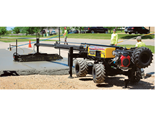
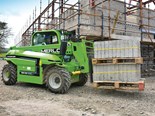

.jpg)

